Advanced Thuluth Script inspired by Islamic Calligraphy
Jan 06, 2011 Typography
Fatima Al N., a graphic designer from Abu Dhabi explains her project:
“As an emerging Emirati artist, it is no doubt that the development of art has a major influence on young female artists. However our influences are mainly from western artists rather than influential artists from the Middle East. One of the most appreciated arts in the Islamic world is Islamic Calligraphy, which has been a major influence on many artists until this day. Islamic Calligraphy is one section from Islamic arts, it is definitely the most honored art form in the Islamic world. Based on script styles evolved in the chanceries of the Islamic world, it is an art that has been used not only to communicate but also to decorate and revive numerous two and three-dimensional artifacts. Islamic writing is a very controlled form, based on a long tradition of a proportional script dependent upon the width and slant of the point of a reed pen & the rhombic dot (nuqta). One of the most respected calligraphic scripts is Thuluth, it has enjoyed enormous popularity as an ornamental script for calligraphic inscriptions, titles, headings and colophons. Curved letters written with barbed heads characterizes it. The letters are linked and sometimes intersecting, this provocative cursive flows of ample and often complex proportions. Thuluth is known for its elaborative graphics and remarkable plasticity.
My task is to visually study Thuluth script to create a new typeface based on it. The intention is to adjust Thuluth script, intended for modern and contemporary script. Making it less complex with fewer ornaments. My objective is to make the script legible, applicable, simplified and readable. In addition making it suitable for body text as well as colophons. That is by adjusting the leading, proportions, depth and height, and open counters to closed counters, along with shortening the ascenders and descenders, whereas maintaining the opulence of Thuluth script, because it is used in the Holy Quran.”
The presentation consisted of 3 different packages:
First package
Fatima Al N. designed a package envelope that represented each Isolated Arabic letter with the initial, medial and final position.
Second package
She designed 3 different bookmarks, one has the pattern inspired by Islamic ornaments, and the other two has script from the Holy Quran, that are related with the developed of calligraphy and education. These two bookmarks are also created from the letters I re-designed.
Third package
designed the 28 Arabic Alphabet Letters, like a deck of ‘letters’ withs its own package.
Each design is based on simplicity & clarity by bringing out the importance & beauty of each letter in the Arabic Alphabet.
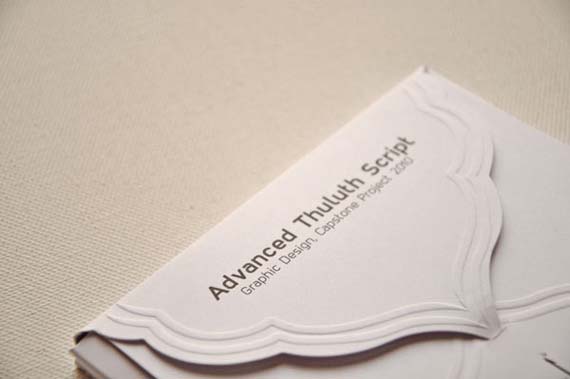
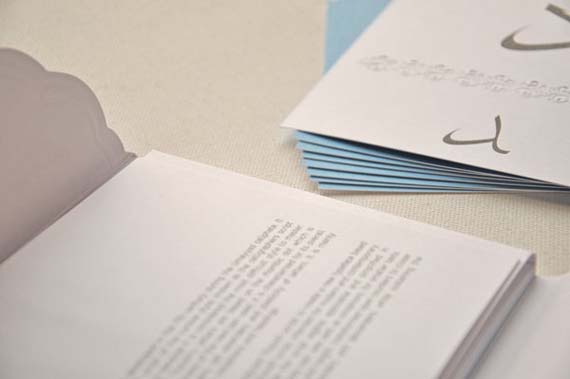
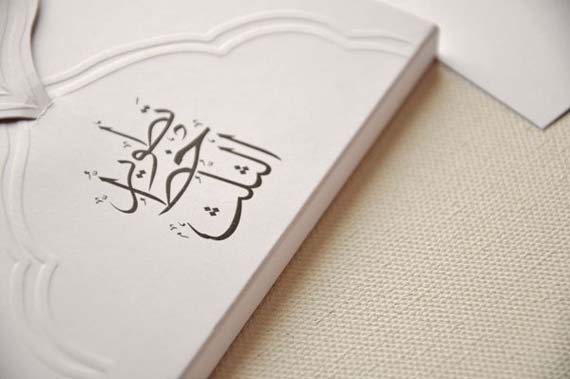
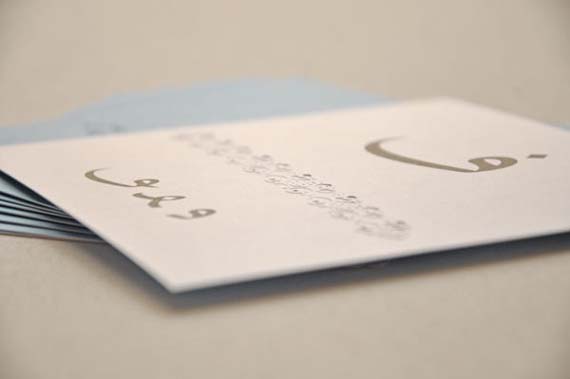
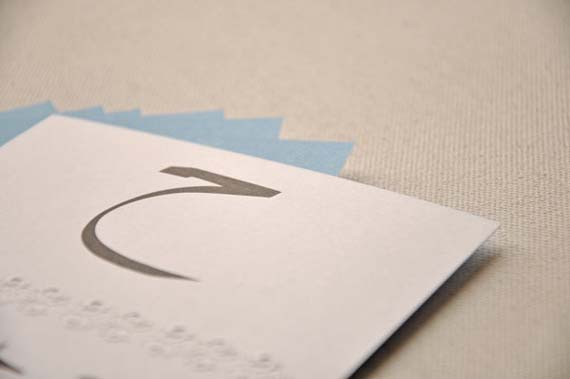
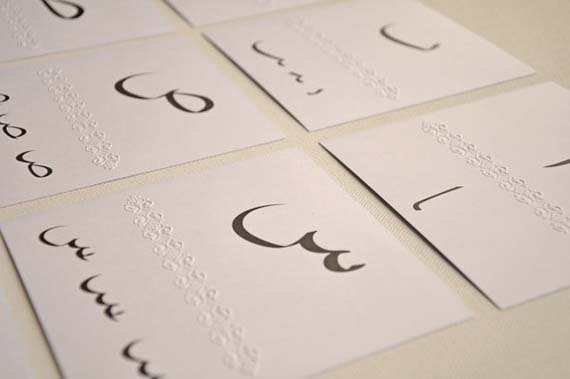
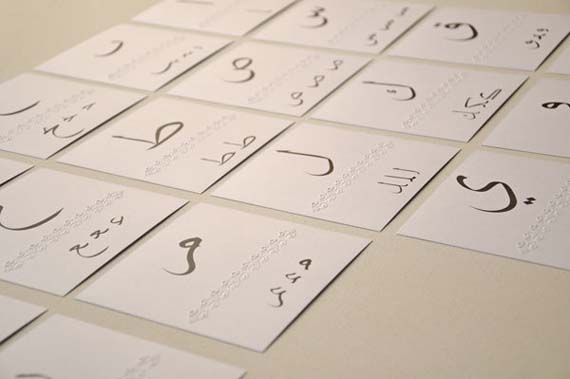
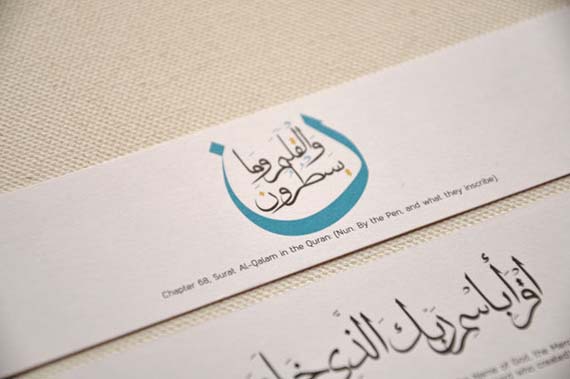
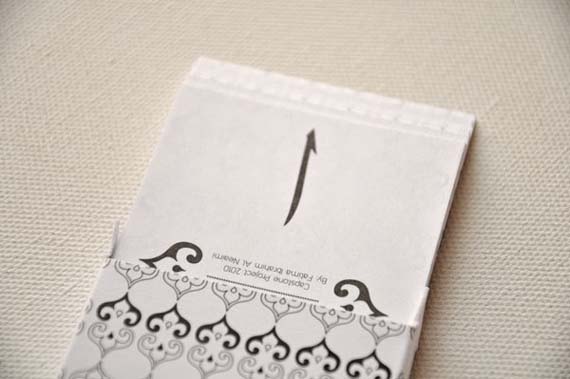
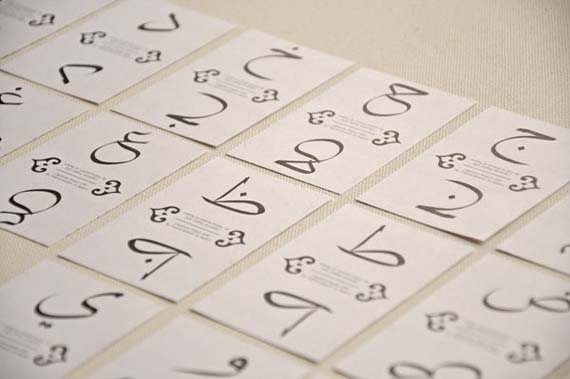
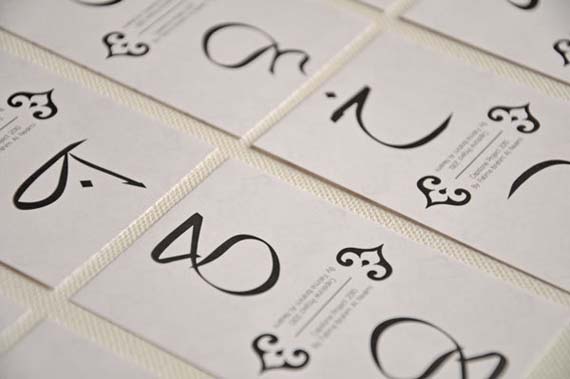
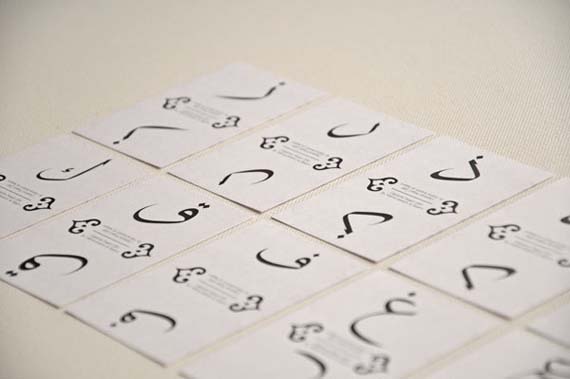
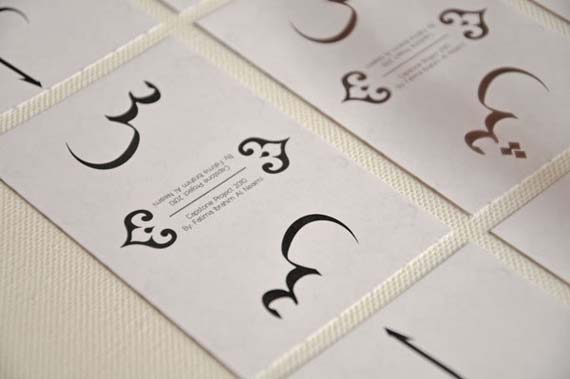
This poster demonstrates the guidelines & principles of Thuluth, Fatima Al N. re-designed:
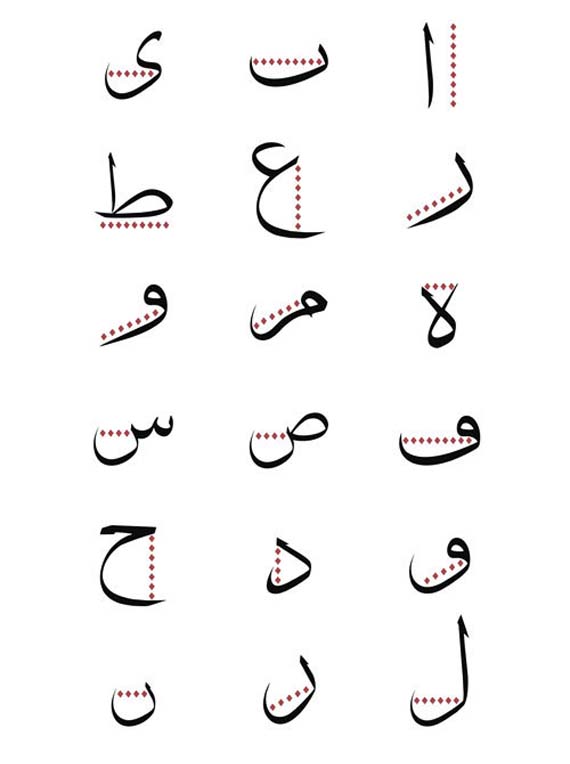
Source: http://www.behance.net/gallery/Capstone-Project/743411
Comments
Jan 06, 2012 - 14:56:44
Beautiful work mashaAllah
Jan 15, 2011 - 9:53:14
excellent work how can i buy this?
Jan 06, 2011 - 17:23:36
I agree with you Iyadh..
the huroof shapes were terribly modified ..
write with a bamboo stick and scan the huroof if you want to use a computer ..
Jan 06, 2011 - 15:20:18
Ok, i’ll send some examples soon ^^
Jan 06, 2011 - 15:14:30
Great. Maybe you could send some of your work at: info@islamicartsmagazine.com. I would love to see your work
Jan 06, 2011 - 15:09:28
You are welcome.
As you may see, i haven’t say anythink about graphic element or global design or paper quality because they are nice.
i’m critizising Fatima’s “typographic” work because i’m also a typographer, a calligrapher and a graphic designer that’s why i didn’t talk about the placement of graphic elements, quality of paper and print and so on because i like them and they looks great for me.
Jan 06, 2011 - 15:03:51
Iyadh, thank you for all the links, really nice examples. I understand your point. But I also feel we should give Fatima some credit for her free interpretation of Thuluth Script. Graphic Design has different rules than traditional Islamic Calligraphy. It allows some freedom in modification. It is not just about the Script, but also about the placement of graphic elements, quality of paper and print. We may like it or not.
Thank you again for your comment.
Jan 06, 2011 - 14:37:35
i know she is trying to modify traditional scripts into typography, but this doesn’t mean to deform the shapes of letters. Just try to compaire these letters (written by a famous turkish calligrapher named Mohamed Özçay) to the letters modified by Fatima :
http://medya.zaman.com.tr/2009/04/18/saray01.jpg
http://medya.zaman.com.tr/2009/04/18/saray05.jpg
http://nibrohcalligraphy.blogspot.com/2009/01/karya-para-kaligrafer-terbaik-abad-ini.html
and fro a closer comparaison, look at this traditional “waw” and the one written/modified by Fatima :
http://www.kihlmezder.com/admin/components/com_fireboard/uploaded/images/vav_harfi_mehmet_ozcay_copy.jpg
I hope you’ve got my point of view concerning this modification.
Jan 06, 2011 - 14:23:33
I think is a very nice example of Islamic Calligraphy in graphic design. Fatima modified Thuluth into typography.
Iyadh, why do you think is bad?
Jan 06, 2011 - 14:13:19
Very bad examples of thuluth script, really bad :(
Add a comment